A new CASA system for East Africa, Tanzania, for the National Artificial Insemination Centre: A unique situation!
In Tanzania and elsewhere in Africa there is a great need to improve the quality of livestock in general and particulalrly cattle such as bulls. Currently the quality in terms of both meat and milk production is poor. What can be done to improve the situation?
Fortunately, the Tanzanian Government and particularly the Ministry of Livestock and Fisheries and advisors realized that some drastic steps needed to be taken to address this problem. Many governmental and NGO groups collaborated to form a central National Artificial Insemination Centre (NAIC) near Arusha in Tanzania. The Centre, the only one in Tanzania is situated in a village called Usa River, and in the middle of an indigenous forest with lush vegetation for the bulls that are kept there under controlled but natural conditions (Figs. 1, 2 and 3). The facility is extremely well equipped with automated freezing equipment, straw labelling and processing. But where does the high quality semen come from for insemination purposes?
About three years ago high quality embryos from top meat breeds from South Africa such as the Bonsmara breed (Fig. 4) were imported and implanted in local Tanzanian cows. Several of the bulls born from these cows are now more than two years old and are the main semen producers used for freezing and subsequently insemination in Tanzania. Semen is collected by the artificial vagina method. Using semen from these and other high quality breeds from Niue Zeeland this centre currently freeze more than 30000 straws per year. All of this happens under the capable hands of a young veterinarian, Dr Dafay Bura Buay and his excellent team of seven scientists and other assisting staff. However, in order to meet the country’s needs the number of frozen straws for insemination purposes will have to be increased to 3 million straws per year. So, the greatest challenge here is to use an automated quantitative system that can rapidly evaluate all aspects of semen quality to freeze the very best semen and store the data in a database that is friendly to governmental database systems.
Accordingly, a next step in the development of the centre was to obtain a Computer Aided Semen Analysis system. The Microptic SL, SCA, Barcelona, Spain system was selected for many good reasons: It has fully automated modules for sperm concentration, sperm motility determination, calculating number of doses instantly (straws for freezing), defining morphology, vitality and DNA fragmentation quantitatively and rapidly. Since the Centre is in an isolated area relatively close to Mount Kilimanjaro it was also important that if something goes wrong or advice is needed urgently that they be assisted at once. The Microptic system uses internet connection with remote assistance and problems can accordingly be sorted out via remote control from Barcelona directly taking over the computer in the Centre.
Despite the fact that the SCA CASA system of Microptic is very user friendly, very intense training is required to use the system correctly and efficiently and a training course was presented towards the beginning of November 2018 to set quantitative and rapid analysis in motion! I did the installation and training over this period.
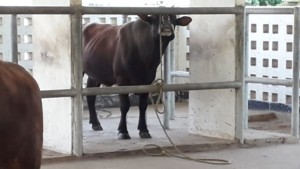
Fig. 4: Bonsmara bull brought as embryo from South Africa and now one of semen producers for insemination purposes.
Apart from training important discussions were also conducted in terms of decreasing as many variables as possible during analysis, and helping to refine the analysis. In addition, interpretation of semen analysis including sperm functional testing and the value of that were all considered important as well as applicable statistical analysis. This young vibrant group at NAIC, Tanzania are now ready to tackle the challenges ahead of improving livestock.
The National NGO Coordinator of Tanzania dealing with Public-Private Partnerships for Artificial Insemination, Joachim M Balakana, and his team, were also instrumental in the NAIC obtaining the SCA system. He and his team (Fig. 6) visited the centre during the final day of training and they were impressed by the prospects but also of greater cooperation with similar ventures in Southern Africa countries.
- Fig. 5: Successful installation and training with Dr Dafay Bura Buay (sitting) group.
- Fig. 6: NAIC staff and visit of NGO to centre with National Coordinator, Joachim Balakana (black shirt in middle). Dr Dafay Bura Buay on left.
Prof Gerhard van der Horst (PhD, PhD)
Senior Consultant
MICROPTIC S.L.



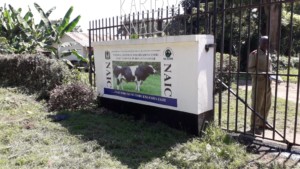

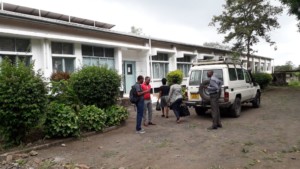
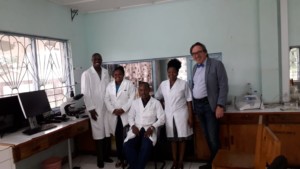
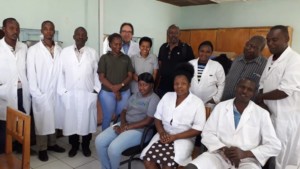
Leave A Comment